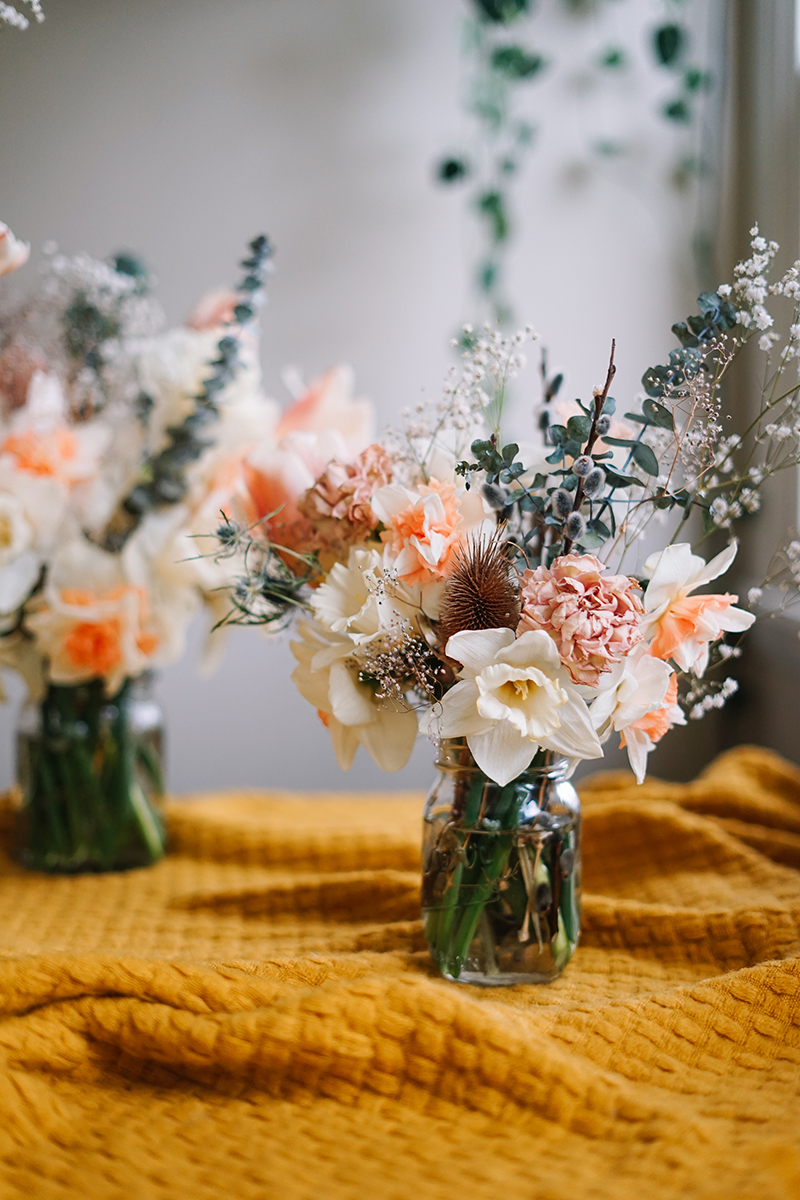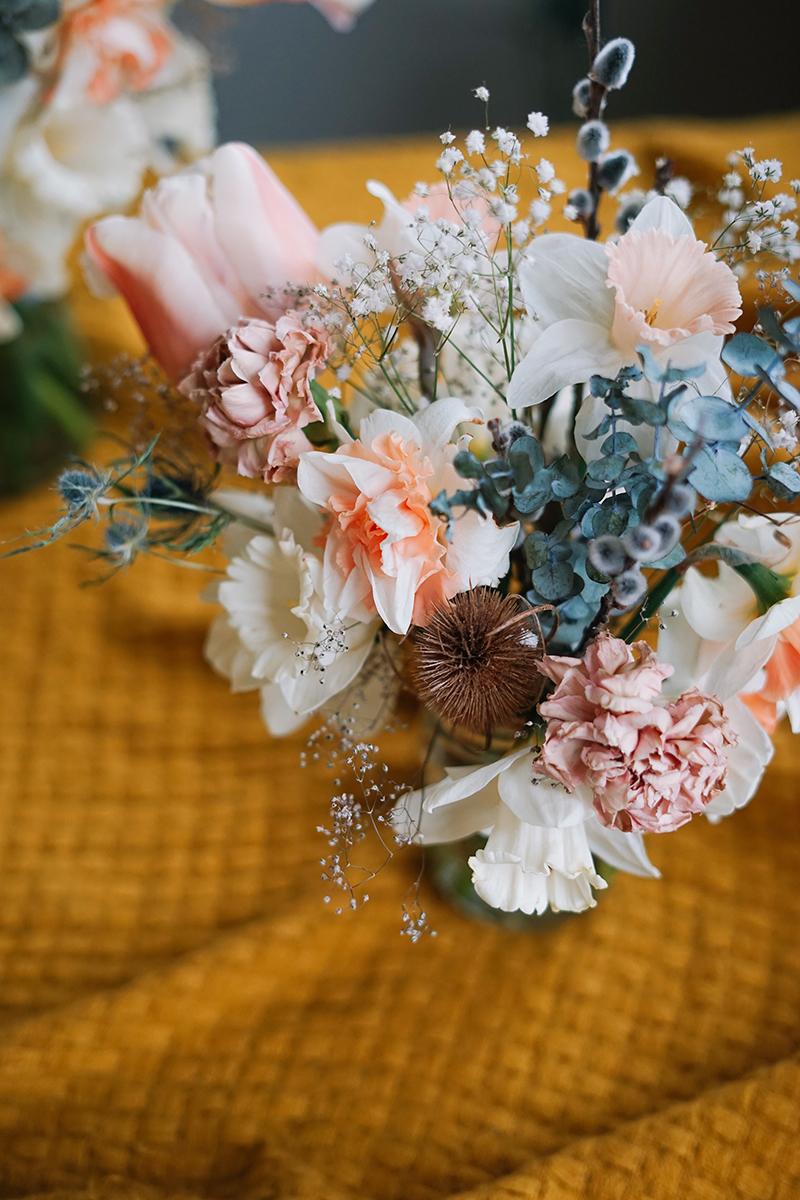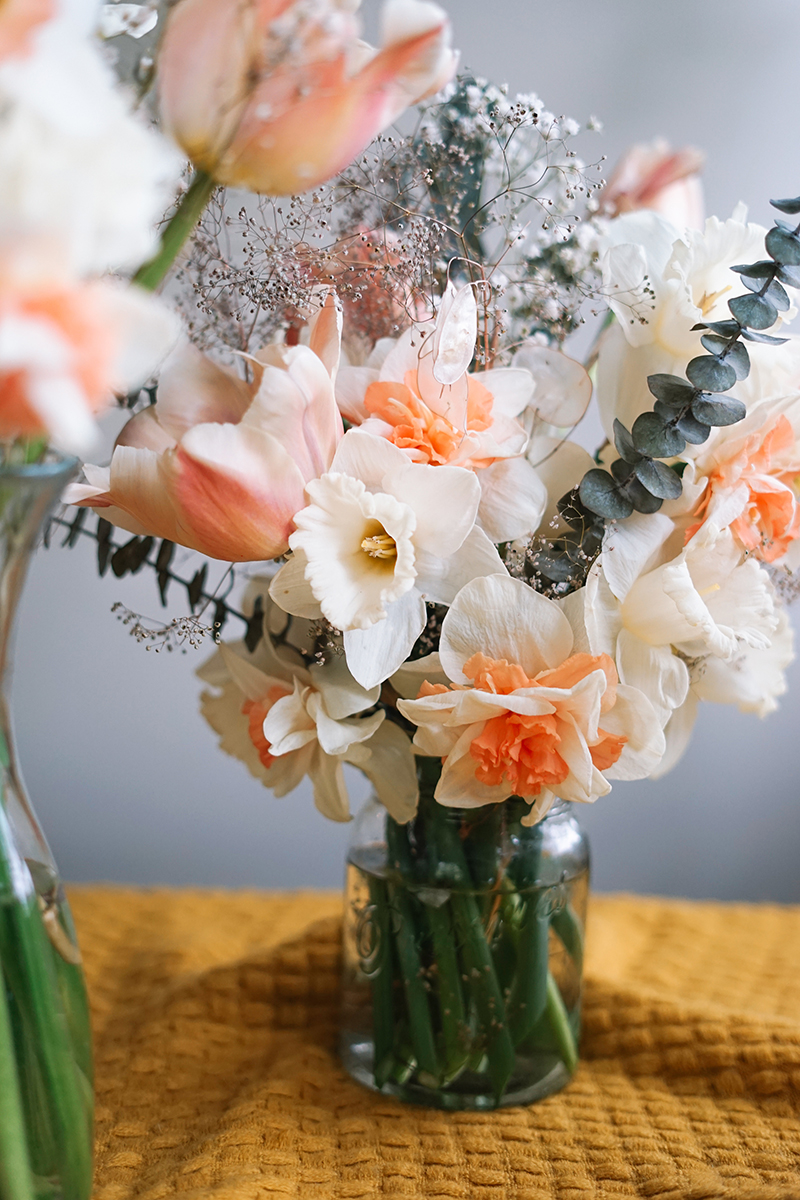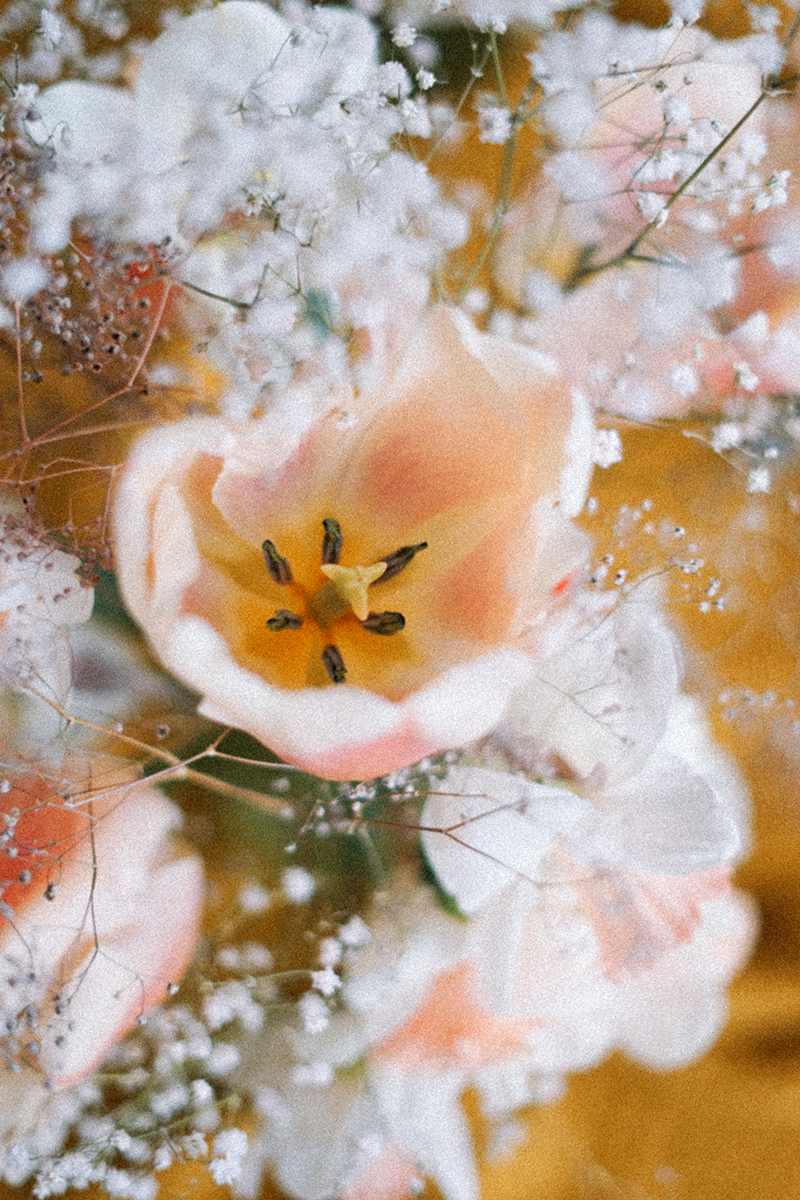My love of flowers goes back as far as I can remember. Professional floral arrangements. DIY flowers. Dried flowers. Pressed flowers. You name it. Once, my mom told me we’d be going to visit my grandma’s friend, who owned a house with a backyard full of lush gardens. I imagined fields of wildflowers, but found pristine landscaped gardens instead, like something that would line a cottage in England. Both inspire me now. I love the manicured front lawns of my Seattle neighborhood. I love the poppies emerging from the sidewalks. And when I lived in Los Angeles, I loved the bougainvillea along the freeways, the succulent gardens, the pepper trees.
Writing for the wedding industry didn’t curb my floral obsession, but inspired me to learn more about creating arrangements myself, so I could bring these blooms into my own little corner apartment. Working from home can be drab, and I don’t take for granted what the peonies blooming by my side as I write this have done for my mood. Beauty is important.
Flowers can be a frivolous thing, especially when thinking of the environment. Why not leave them be? I understand this argument, but as a crafter, and lover of beauty, there is something really fulfilling to me about creating something new with these small miracles in life. And luckily when it comes to DIY flowers, I’ve found, there are many ways to create more sustainable florals.

Sustainable Floral Tips for DIY Flowers
1. Don’t buy fresh cut flowers at the grocery store.
Purchase from your local market instead. Most blooms you’ll find at the store are imported. Thinking about the environmental effects of transporting them (and their need for constant refrigeration) from a top exporter like Colombia alone, is enough to make any eco-friendly DIYer uneasy. Then there’s the question of where they’re coming from, how they are grown (and with what chemicals), and how the growers are compensated (and treated). Perhaps we can dive deeper into this later, but just know that there are many reasons to go local when it comes to fresh flowers and plants.
In Seattle and many other places, that usually means only being able to craft your own DIY flowers during Spring, Summer, and Fall, with little to nothing growing locally in the winter. (This was not a problem when I lived in Los Angeles). I created these bouquets during early spring’s narcissus bloom, so all the daffodils and tulips here came from a market featuring flowers grown on farms in nearby towns.

2. Supplement with foraged and dried blooms.
In Tin Can Studios’ book Handpicked, Ingrid Carozzi mentions times she would gather greenery or flowers right outside or at the event venue, to round out her arrangements. Often weeds and overgrowth can contribute to more undone, wild-looking arrangements (just make sure you aren’t taking from a delicate habitat that needs them to thrive).
I love to add a few dried flowers from my personal collection in DIY arrangements. Some dried blooms are ones I’ve dried on my own (like these carnations), and others were purchased at a local farmer’s market. During the winter here in Seattle, a lot of farms depend on sales of dried rather than fresh flowers, so it’s easy to get, and they truly are “everlasting” as you’ll see mentioned on many a sign at Pike Place.
Tip: Preserve or purchase a big bunch of dried flowers, then carefully deconstruct the bouquet so you can pull from individual stems when you create a bouquet. For example, eucalyptus is hard to find here, so the time I was able to buy some at the market, I saved a few sprigs. They do get dipped in water since I pair them with fresh flowers, so I trim the stem when I’m ready to save it for a next time.

3. Arrange and rearrange.
Some flowers, such as my favorite local bloom of all, lilac, last only a few days in vases, where others (like ranunculus, can you believe it?!) can last up to a few weeks! Whenever I make big arrangements to enjoy at home, I rearrange them every two or three days, picking out anything that can’t be salvaged. Then I rearrange what I have, trim the stems, and replace the water.
I think I used this bunch of baby’s breath in three arrangements of DIY flowers before it stopped looking fresh! No need to throw them out when its initial arrangement went… there was plenty of life left.

4. Take care of your DIY flowers!
It’s important to get to know the kind of blooms in your DIY flowers, so be sure to ask about them when buying at the market. They are the experts! Most flowers live longer if you trim the stems and replace water regularly. Different types of flowers also like different temperates of water, so there’s a lot of details to consider. Learning about the flowers you love, rather than just heading to the grocery store and grabbing a bouquet that will wilt in a couple days, will get you so much closer to truly sustainable florals.
If you’re looking to learn more about sustainable and DIY flowers, I recommend the books Handpicked and Foraged Flora.
How do you keep your hobbies as sustainable as possible? Let us know if you try any of these sustainable floral tips for your DIY flowers!
your two cents